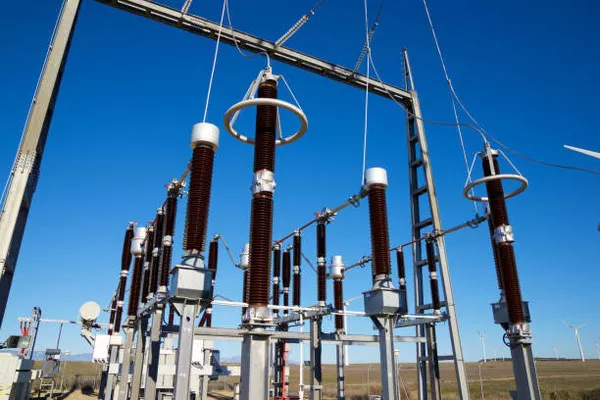Transformers play a crucial role in the distribution and transmission of electrical power, serving as the backbone of modern electrical infrastructure. Within these intricate systems, Current Transformers (CTs) stand as indispensable components, facilitating the measurement and protection of electrical currents. In this comprehensive guide, we delve into the fundamental concepts, applications, and importance of CTs in transformer technology.
Introduction to Current Transformers (CTs)
Current Transformers, commonly abbreviated as CTs, are essential devices utilized in electrical power systems for transforming high currents into proportional and manageable values suitable for measurement and protection purposes. These devices operate on the principle of electromagnetic induction, converting primary currents into secondary currents with a reduced magnitude, while maintaining a proportional relationship.
Operating Principle
The operation of CTs relies on Faraday’s law of electromagnetic induction, stating that a changing magnetic field induces an electromotive force (EMF) in a conductor. CTs consist of a primary winding, through which the current to be measured flows, and a secondary winding, connected to measurement or protection devices. When current flows through the primary winding, it generates a magnetic field, inducing a proportional current in the secondary winding, according to the turns ratio of the transformer.
Construction and Design
CTs are typically constructed using high-permeability cores made of materials such as iron or silicon steel, which efficiently concentrate magnetic flux. The primary winding, consisting of several turns of heavy-gauge wire, encircles the core, while the secondary winding, comprising a larger number of turns of finer wire, is wound around the core adjacent to the primary winding. This configuration ensures accurate transformation of current while minimizing losses.
Applications of CTs
Metering and Measurement: CTs are extensively used in metering systems to measure current flow in electrical circuits accurately. They provide scaled-down current values suitable for instrumentation and monitoring equipment, enabling precise measurement of power consumption.
Protection and Control: CTs play a vital role in safeguarding electrical equipment and personnel by facilitating protective relay systems. In the event of an overcurrent condition or fault, CTs detect abnormal current levels and trip circuit breakers to isolate the faulty section, preventing damage to equipment and ensuring system reliability.
Monitoring and Analysis: In power distribution networks, CTs are deployed for real-time monitoring and analysis of load currents, voltage levels, and power quality parameters. This data is instrumental in optimizing system performance, identifying potential issues, and implementing preventive maintenance strategies.
Fault Diagnosis and Troubleshooting: CTs assist in diagnosing faults and abnormalities within electrical networks by providing accurate current measurements during fault conditions. This information aids engineers and technicians in identifying the root cause of failures and implementing corrective measures promptly.
Types of CTs
Ratio CTs: These CTs are designed to maintain a constant turns ratio between the primary and secondary windings, ensuring accurate current transformation over a specified range of primary currents.
Protection CTs: Also known as relay CTs, these devices are optimized for high accuracy and fast response times, making them suitable for protective relay applications where rapid fault detection and tripping are essential.
Summation CTs: Used in applications where multiple primary currents need to be summed or combined, such as in feeder or busbar protection schemes, summation CTs ensure accurate aggregation of currents for comprehensive system protection.
Bar-type CTs: These compact CTs are designed for installation on busbars or large conductors, offering a space-efficient solution for current measurement and protection in high-density electrical installations.
Selection Criteria
When selecting CTs for specific applications, several factors must be considered to ensure optimal performance and reliability:
Primary Current Range: Choose CTs with an appropriate rated primary current to accommodate the expected load currents and fault levels within the electrical system.
Accuracy Class: Select CTs with the required accuracy class to meet the accuracy requirements of measurement and protection devices, considering factors such as system voltage, load characteristics, and regulatory standards.
Burden and Accuracy Limit Factor: Evaluate the burden and accuracy limit factor of CTs to ensure compatibility with connected devices and minimize measurement errors under varying load conditions.
Environmental Conditions: Consider environmental factors such as temperature, humidity, and vibration levels to select CTs with suitable insulation, enclosure protection, and operational reliability for the intended application environment.
Installation and Maintenance
Proper installation and maintenance practices are crucial for ensuring the optimal performance and longevity of CTs:
Mounting and Orientation: Install CTs securely in a location free from mechanical stress and electromagnetic interference, with the primary winding oriented in the direction of current flow for accurate measurements.
Connection and Wiring: Follow manufacturer guidelines for proper connection of primary and secondary conductors, ensuring correct polarity and phase alignment to avoid measurement errors and equipment damage.
Periodic Testing and Calibration: Regularly inspect CTs for signs of damage or deterioration and perform periodic testing and calibration to verify accuracy and compliance with specifications.
Protection and Enclosure: Provide adequate protection and enclosure for CTs to shield them from environmental hazards, moisture, and physical damage, extending their service life and reliability.
Conclusion
Current Transformers (CTs) are indispensable components of modern electrical systems, facilitating accurate current measurement, protection, and control in power distribution and transmission networks. By understanding the operating principles, applications, and selection criteria of CTs, engineers and technicians can effectively leverage these devices to ensure the reliability, safety, and efficiency of electrical infrastructure.
From metering and monitoring to fault detection and analysis, CTs play a pivotal role in maintaining the integrity and stability of electrical networks, making them essential assets in the pursuit of reliable and sustainable energy delivery. Through proper installation, maintenance, and adherence to best practices, CTs can fulfill their critical functions and contribute to the advancement of electrical engineering and power system technology.

